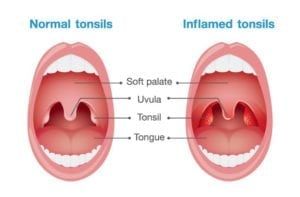Gallstones are small, hardened deposits in the gallbladder, a small, pear-shaped organ on the right side of the abdomen, just beneath the liver. The gallbladder stores bile, a digestive fluid produced by the liver, which helps break down and absorb fats. Gallstones can range from as small as a grain of sand to as large as a golf ball. They can cause inflammation and blockages in the bile ducts, leading to severe pain and other complications. This article will delve into the causes, symptoms, diagnosis, and treatment options for gallstones while maintaining a neutral and impartial tone.
Types of Gallstones
Cholesterol Gallstones
Cholesterol Gallstones are the most common type, accounting for about 80% of all gallstones. Cholesterol gallstones form when there is an excess of cholesterol in the bile, causing it to solidify. These stones can vary in size and may cause blockages in the bile ducts, leading to symptoms and complications.
Pigment Gallstones
The second category is pigment gallstones, made up of bilirubin, a waste product that forms when red blood cells are broken down. Pigment gallstones are more common in people with certain medical conditions, such as cirrhosis of the liver or blood disorders like sickle cell anemia. These stones may also cause blockages in the bile ducts, resulting in similar symptoms and complications as cholesterol gallstones.
Symptoms
Many people with gallstones have no symptoms, and the gallstones are discovered incidentally during medical tests for other conditions. When symptoms do occur, they may include:
- Sudden, severe pain in the upper right or center of the abdomen
- Pain between the shoulder blades or in the right shoulder
- Nausea and vomiting
- Fever and chills, which may indicate an infection
The gallstone pain, known as biliary colic, usually occurs after a fatty meal and can last several hours.
Causes and Risk Factors
Several factors contribute to the formation of gallstones, including:
- Genetics: A family history of gallstones increases the likelihood of developing them.
- Gender and age: Women are more likely to develop gallstones than men, and the risk increases with age, particularly after 40 years old.
- Obesity: Excess body weight can increase the concentration of cholesterol in the bile, leading to the formation of cholesterol gallstones.
- Rapid weight loss: Losing weight too quickly can lead to an imbalance in bile components, increasing the risk of gallstones.
- Diet: A diet high in cholesterol and low in fiber can contribute to forming gallstones.
Treatment Options
Treatment for gallstones depends on the severity of the symptoms and the presence of complications. Options include:
- Watchful waiting: If gallstones are not causing symptoms, a doctor may recommend monitoring the condition without immediate treatment.
- Medication: In some cases, medications can dissolve cholesterol gallstones. However, this treatment is slow and may only be effective for some patients.
- Surgery: The most common treatment for symptomatic gallstones is cholecystectomy, the surgical removal of the gallbladder
- Laparoscopic cholecystectomy, a minimally invasive procedure, is the preferred method, as it involves smaller incisions, shorter recovery times, and a lower risk of complications. In some cases, an open cholecystectomy may be necessary, which involves a larger incision and a longer recovery period.
- Endoscopic retrograde cholangiopancreatography (ERCP): This procedure removes gallstones that have migrated into the bile ducts, causing blockages or infections. A flexible tube called an endoscope is inserted through the mouth, down the esophagus, into the stomach and small intestine, allowing the doctor to access the bile ducts and remove the stones.
- Extracorporeal shock wave lithotripsy (ESWL): This treatment uses high-energy shock waves to break up gallstones into smaller fragments, which can be quickly passed or removed. ESWL is less commonly used and is typically reserved for cases where other treatments are unsuitable.
Prevention
While it is not always possible to prevent gallstones, adopting specific lifestyle changes can help reduce the risk of their formation:
- Maintain a healthy weight: Obesity increases the risk of gallstones, so reaching and maintaining a healthy weight through a balanced diet and regular exercise can be beneficial.
- Gradual weight loss: If you need to lose weight, do so gradually, as rapid weight loss can increase the risk of gallstones.
- Eat a balanced diet: A diet high in fiber and low in saturated fats and cholesterol can help prevent gallstones.
- Regular physical activity: Regular exercise can help maintain a healthy weight and reduce the risk of gallstones.
Frequently Asked Questions
Can I live without a gallbladder?
Yes, you can live without a gallbladder. After cholecystectomy, the liver continues to produce bile, which flows directly into the small intestine rather than being stored in the gallbladder.
Are there any long-term complications after gallbladder removal?
Most people can resume a normal lifestyle after gallbladder removal, but some may experience ongoing digestive symptoms, such as diarrhea, bloating, or gas. These symptoms can often be managed through dietary adjustments.
Can gallstones come back after treatment?
Once the gallbladder is removed, gallstones typically do not recur. However, if a patient has undergone ERCP to remove stones from the bile ducts, new stones could form in the future.
Is there a connection between gallstones and gallbladder cancer?
Gallstones are a risk factor for gallbladder cancer, but the overall risk is still low. The majority of people with gallstones never develop gallbladder cancer.
Can I prevent gallstones by avoiding certain foods?
While no specific food has been directly linked to gallstone formation, maintaining a balanced diet high in fiber and low in saturated fats and cholesterol can help reduce the risk of developing gallstones.
Conclusion
In conclusion, gallstones are hardened deposits that form in the gallbladder, potentially causing pain and complications. If you suspect that you have gallstones or are experiencing symptoms, consult a healthcare professional for proper diagnosis and treatment. Understanding the causes, symptoms, and treatment options can help individuals make informed decisions about their healthcare. Adopting a healthy lifestyle, including a balanced diet and regular exercise, can help reduce the risk of developing gallstones.





